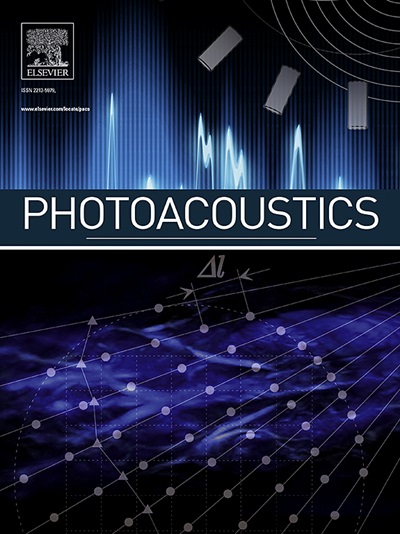Hybrid transformer-CNN network-driven optical-scanning undersampling for photoacoustic remote sensing microscopy
IF 7.1
1区 医学
Q1 ENGINEERING, BIOMEDICAL
引用次数: 0
Abstract
Imaging speed is critical for photoacoustic microscopy as it affects the capability to capture dynamic biological processes and support real-time clinical applications. Conventional approaches for increasing imaging speed typically involve high-repetition-rate lasers, which pose a risk of thermal damage to samples. Here, we propose a deep-learning-driven optical-scanning undersampling method for photoacoustic remote sensing (PARS) microscopy, accelerating imaging acquisition while maintaining a constant laser repetition rate and reducing laser dosage. We develop a hybrid Transformer-Convolutional Neural Network, HTC-GAN, to address the challenges of both nonuniform sampling and motion misalignment inherent in optical-scanning undersampling. A mouse ear vasculature image dataset is created through our customized galvanometer-scanned PARS system to train and validate HTC-GAN. The network successfully restores high-quality images from 1/2-undersampled and 1/4-undersampled data, closely approximating the ground truth images. A series of performance experiments demonstrate that HTC-GAN surpasses the basic misalignment compensation algorithm, and standalone CNN or Transformer networks in terms of perceptual quality and quantitative metrics. Moreover, three-dimensional imaging results validate the robustness and versatility of the proposed optical-scanning undersampling imaging method across multiscale scanning modes. Our method achieves a fourfold improvement in PARS imaging speed without hardware upgrades, offering an available solution for enhancing imaging speed in other optical-scanning microscopic systems.
求助全文
约1分钟内获得全文
求助全文
来源期刊

Photoacoustics
Physics and Astronomy-Atomic and Molecular Physics, and Optics
CiteScore
11.40
自引率
16.50%
发文量
96
审稿时长
53 days
期刊介绍:
The open access Photoacoustics journal (PACS) aims to publish original research and review contributions in the field of photoacoustics-optoacoustics-thermoacoustics. This field utilizes acoustical and ultrasonic phenomena excited by electromagnetic radiation for the detection, visualization, and characterization of various materials and biological tissues, including living organisms.
Recent advancements in laser technologies, ultrasound detection approaches, inverse theory, and fast reconstruction algorithms have greatly supported the rapid progress in this field. The unique contrast provided by molecular absorption in photoacoustic-optoacoustic-thermoacoustic methods has allowed for addressing unmet biological and medical needs such as pre-clinical research, clinical imaging of vasculature, tissue and disease physiology, drug efficacy, surgery guidance, and therapy monitoring.
Applications of this field encompass a wide range of medical imaging and sensing applications, including cancer, vascular diseases, brain neurophysiology, ophthalmology, and diabetes. Moreover, photoacoustics-optoacoustics-thermoacoustics is a multidisciplinary field, with contributions from chemistry and nanotechnology, where novel materials such as biodegradable nanoparticles, organic dyes, targeted agents, theranostic probes, and genetically expressed markers are being actively developed.
These advanced materials have significantly improved the signal-to-noise ratio and tissue contrast in photoacoustic methods.
 求助内容:
求助内容: 应助结果提醒方式:
应助结果提醒方式:


